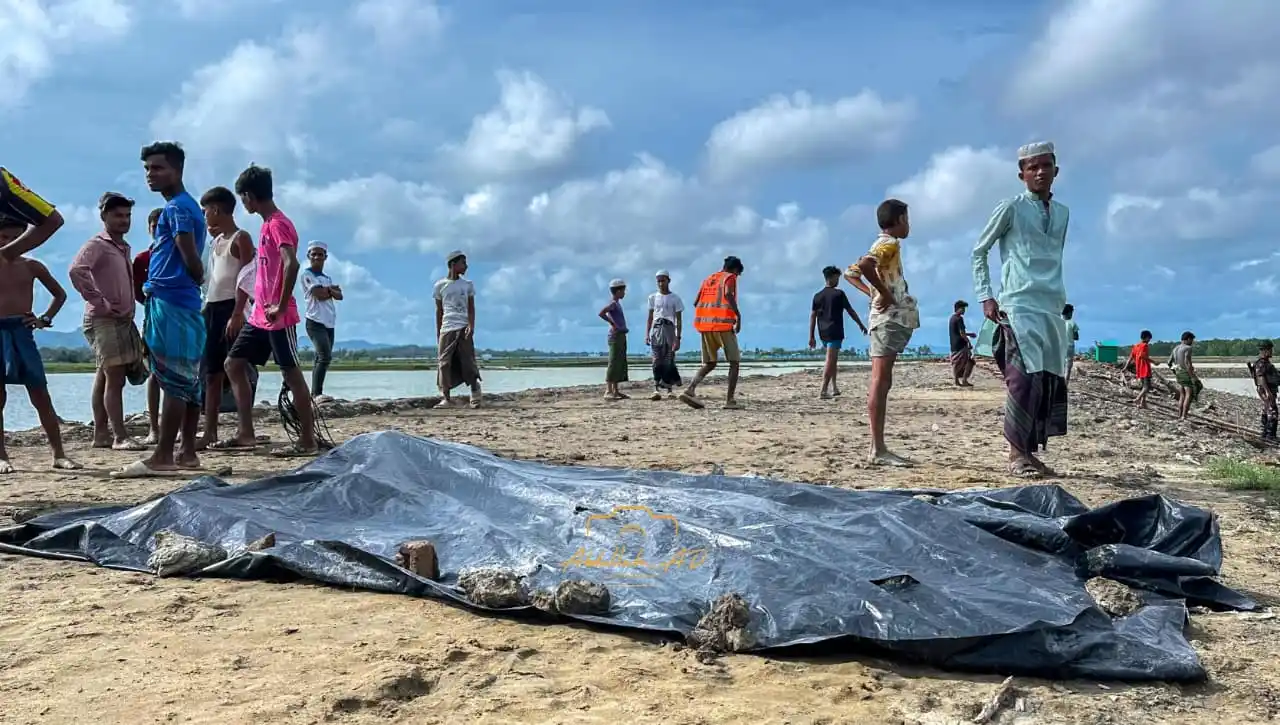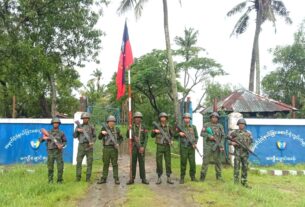For the Rohingya people, August 5 is no longer just a date—it is a painful symbol of a genocide that refuses to end. While August 25, 2017, is widely recognized as the beginning of Myanmar’s systematic campaign of violence, many Rohingya now mark August 5, 2024, as a Black Day—a reminder of the atrocities that still aim to erase them from their ancestral homeland.
For survivors and especially for the youth, August 5 is not about a single event. It represents an unbroken chain of suffering, displacement, and fear that has stretched across decades.
From Military Persecution to Arakan Army Violence
The Rohingya—rendered stateless by Myanmar’s 1982 Citizenship Law—have long faced exclusion, forced displacement, and mass killings. Once carried out solely by the Myanmar military, the persecution is now also driven by the Arakan Army (AA).
Since the launch of Operation 1027, the AA has escalated its campaign in Rakhine State—burning villages, blocking humanitarian aid, enforcing communication blackouts, and displacing more than 100,000 Rohingya.
‘Two Genocides’
Human rights activist Md Younus Arman recalls both waves of violence with deep pain.
“The wounds of the Rohingya crises of 2017 and 2024 are still fresh in my heart—two genocides where the world witnessed the systematic killing of the Rohingya,” he told Rohingya Khobor.
Between April 27 and May 20, 2024, the AA burned 48 Rohingya villages in Buthidaung, killing more than 4,000 civilians and displacing over 70,000. In early August, artillery and drone strikes hit Maungdaw, killing at least 200.
“These are not random acts of war,” survivors say, “but coordinated attacks aimed at cleansing Rakhine of Rohingya.”
Voices from the Ground
Younus vividly remembers August 2024:
“I pulled hundreds of lifeless bodies of our Rohingya brothers, sisters, and children from the Naf River. They were killed simply for being Rohingya. How can I stay silent when I have held the cold, lifeless hands of innocent children who never got to grow up?”
Economic persecution compounded the violence. In April 2024 alone, Rohingya families were extorted of over $635,000—through “security fees,” fishing bribes, and livestock confiscations. Many were threatened with execution or eviction if they could not pay.
‘Leave or We Will Kill You’
Survivor Osman described how both the Myanmar military and the AA targeted civilians:
“Instead of attacking the Arakan Army, the Myanmar government bombed Muslim villages. The AA warned, ‘Leave your villages. If you don’t, we will kill you.’ And they did.”
Villages such as Haari Para and other areas in Maungdaw were attacked. Hundreds were killed, and thousands fled. Along the shores of Maungdaw and Buthidaung, countless bodies lay unburied, victims of drone and airstrikes.
The Naf River Massacre
Khin Maung Thein, a renowned Rohingya photographer, calls August 5, 2024, even more devastating than 2017:
“The AA carried out drone and airstrikes along the seashore, killing hundreds. A boat full of fleeing civilians was destroyed mid-river. Bodies later washed up on the Bangladeshi side of the Naf River. This is why August 5 should be remembered as the Naf River Massacre Day.”
Abductions, Sexual Violence, and Forced Displacement
In 2024, over 6,000 Rohingya were abducted or disappeared, many killed when families couldn’t afford ransom. Women and girls remain targets of rape, enslavement, and exploitation, echoing the atrocities of 2017.
The AA has also reportedly begun resettling Rakhine and Marma communities in cleared Rohingya villages like Burashikdar Para, Rabaillah, and Minga Lar. On February 25, 2025, mosques and homes in Thaie Chaung were demolished—part of what survivors say is a deliberate effort at demographic engineering.
A Silent Genocide
Human rights defender Ro Habib Arkani warns:
“Since 2024, the Rakhine Army has mirrored the same brutal policies of the Myanmar military—mass killings, arrests, village burnings, and forced displacements. If their goal is not to eliminate us, then why are those trying to return home tortured and forced back to Bangladesh? The world must no longer turn a blind eye.”
Why August 5 Matters
While the May 2024 attacks claimed even higher casualties, August 5 holds a symbolic weight. Survivors say it was the day when displaced communities, especially youth, began to speak out openly about their pain.
On August 5, along the Maungdaw–Buthidaung border, AA drone strikes, raids, and forced displacement killed more than 200 people. Field data from the Rohingya FDMN Representative Committee confirms these accounts, though the true toll is likely far higher.
A Day of Memory and Resistance
August 5 is not an official genocide commemoration day, but within Rohingya memory, it is now a day of mourning and remembrance—a day to honor the dead and remind the world that the genocide continues.
If August 25, 2017, marked the beginning of Myanmar’s genocidal campaign, then August 5, 2024, stands as one of its most haunting chapters—a Naf River Massacre Day that demands truth, justice, and global accountability.




